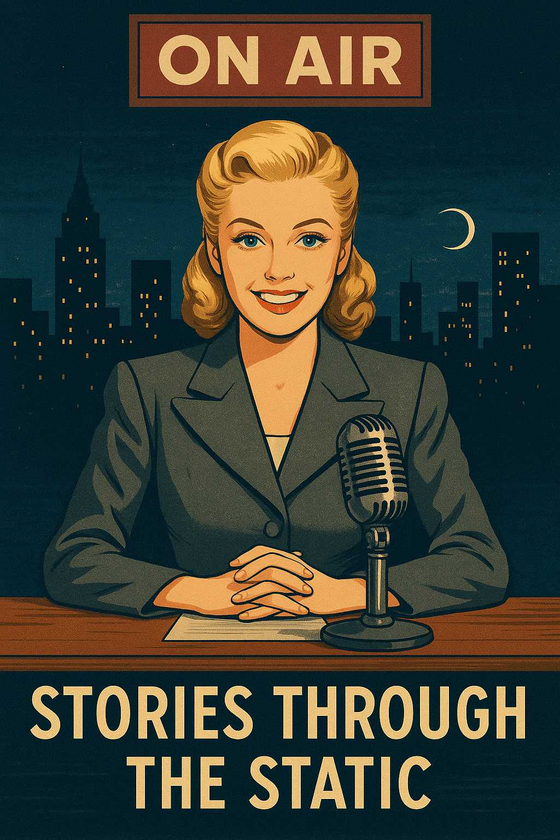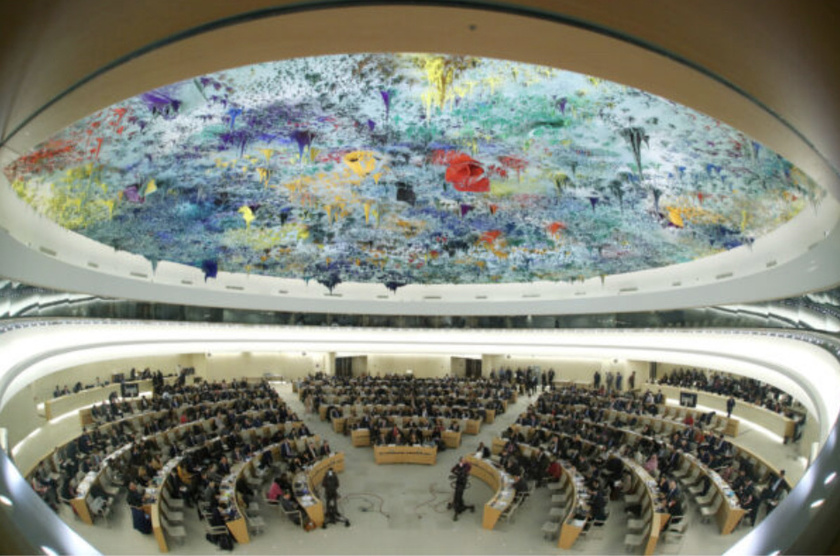My thoughts because if I don’t share them they are going to burn up my brain. 😉
The progressive ideology called “environmental, social, and governance” (ESG) includes various things from climate change to social justice. ESG criteria have been imposed on corporations for years by the finance industry, including activist asset managers, banks, rating agencies, proxy agents, and elite global clubs such as Climate Action 100+, the Global Investors Statement to Governments on Climate Change, the Net Zero Asset Managers Initiative, and the Glasgow Financial Alliance for Net Zero. Collectively, these organizations have succeeded in compelling corporate executives to fall in line behind a strict uncompromising agenda.
In March, Standard & Poors, one of the world’s top credit rating agencies, announced that ESG scoring would be expanded beyond company ratings to now include U.S. states as well. And in December, FICO, the consumer credit rating agency, predicted that personal ESG scores would soon follow, stating that “one example would be the inclusion of property energy ratings data in mortgage valuation and decisioning.” FICO scores determine a person’s ability to get a mortgage, car loan, bank loan, or credit card. Simply stated if you can not or will not support their initiatives you are barred from loans to buy a home, a car or have a credit card.
“I think it is highly likely that within the next two years, you’re going to see financial institutions start to use a personalized social credit score of some kind to make decisions about things like your access to loans, your interest rate, or whether you’re eligible for insurance coverage,” said Justin Haskins, director at the Heartland Institute, a free-market think-tank. “All the signs are pointing to that happening very soon.” Jobs ask now if you have complied with medical procedures and drugs they want you to take or they will not hire you. Here we are on the raggedy edge, those of us who prefer to understand and agree without coercion to participation in a group run program.
“We should be very thankful that our government doesn’t have the power to mandate that,” said Jonathan Williams, chief economist at the American Legislative Exchange Council, a membership organization for state legislators. But progressive control over the financial system could mean “having people’s freedoms eroded without any legislation ever having to be passed, whether it’s companies with a radical take on ESG or FICO personal credit scores.” Oh no we don’t need to pass a law. You simply can’t participate in society until you comply.
“They can’t pass the Green New Deal in the United States Congress,” said New Hampshire State Rep. J.D. Bernardy, “but the banks can certainly implement it. The major banks and financial management firms and insurance companies are de facto deciding how we will be able to live. They are becoming our new legislatures.” Bernardy has introduced a bill in New Hampshire to bar financial institutions from using personal social credit scores. This has long been the corporation of the United States of America we simply didn’t notice it was happening.
The power that banks have over people was demonstrated in February when Canadian banks froze the personal accounts of protestors and their crowdfunding donors, instantly cutting them off from their own money, savings, and income. While U.S. financial companies have not come close to doing anything so brazen, they have started to selectively deny banking and payment services to groups and individuals they consider politically undesirable.
The Heritage Foundation reported that Chase Bank closed the accounts of former Trump national security adviser Lt. Gen. Michael Flynn in 2021 for “reputational reasons,” and Wells Fargo made a “business decision” to eject Republican Senate candidate Lauren Witzke. In 2019, PayPal revealed it was working with the Southern Policy Law Center (SPLC), a left-wing group, to determine who should be blocked from using its payment services. A new group of undesirables. What is hard for me to understand is why the current “in” group cannot see the tide always turns and they will in their turn become the undesirables with nothing to protect them.
In November, JPMorgan subsidiary WePay canceled payment services to a conservative fundraising event. In response, Missouri State Treasurer Scott Fitzpatrick informed the bank that his state “would not do business with them so long as they continued to discriminate against customers based on their mainstream political positions.” Who determines what is “mainstream”? Who watches the watchers?
In January, Bank of America, without due process or a warrant, mined the data of hundreds of personal accounts to see who had traveled to Washington D.C. or purchased firearms around the time of the Jan. 6, 2021, Capitol breach. Soon afterward, the Biden administration attempted unsuccessfully to compel all banks to report to the IRS any transactions greater than $600. Under the Obama administration, the Federal Deposit Insurance Corporation (FDIC) carried out an illicit program called “Operation Chokepoint,” which arm-twisted banks to cut off lending to firearms retailers, telling banks that such loans would be considered “high risk” by regulators. What happens when their cause is not the darling of the day?
During its first week in power, the Biden administration canceled a rule enacted by the Trump administration that prohibited banks from conducting Chokepoint-style discrimination against customers on ideological grounds. This reversal now provides legal cover for ideological lending, such as banks reducing credit to fossil fuel companies and Citibank’s policy that it will not do business with gun makers or small-business retailers who sell to people under the age of 21 or who sell “high capacity magazines,” which are considered magazines of more than 10 rounds. While Citibank states that it is not on “an ideological mission to rid the world of firearms,” the federal legal age for rifles and shotguns is currently 18 and most semi-automatic handguns and rifles come with standard-issue magazines with more than 10 rounds, which effectively bars most of the gun industry from Citibank’s services, regardless of their creditworthiness. There is so much these days that screams of the illogical. I listened to a Congressman state that no criminal shooter had ever been stopped by a gun. 😳 And then requested statistics. In my humble world I’d need examples of what stopped them that didn’t include a firearm.
The Biden administration took similar action with credit unions. In March of 2021, Todd Harper the chairman of the National Credit Union Association (NCUA), a regulatory agency, stated that “a credit union’s field of membership is often tied to a business like an oil refinery or a community linked closely to farming … such credit unions will need to consider adjusting their fields of membership or altering lending portfolios” to reduce “the impact of climate change.” This caused North Dakota Gov. Doug Burgum to protest that while “we appreciate NCUA’s concern about climate change,” its agenda could hurt family farmers and ranchers, which are often criticized as carbon emitters and could be put out of business if they can’t get access to credit.
The administration’s support for ESG was further demonstrated by the Securities and Exchange Commission’s announcement in March that all listed companies must soon deliver audited reports on their greenhouse gas emissions and climate risks. The Federal Reserve recently joined the global Network of Central Banks and Supervisors for the Greening of the Financial System. The Department of Labor reversed a Trump administration regulation that prohibited private pension managers from investing pensioners’ money according to non-financial criteria, including ESG. And the Department of Justice announced in May that it was establishing an Office of Environmental Justice that “will engage all Justice Department bureaus, components and offices in the collective pursuit of environmental justice.”
Many argue that, as private companies, banks and insurers are free to pursue ESG policies and do business with whomever they choose. However, U.S. anti-trust law prohibits companies from colluding to harm other companies or industries, which likely includes the various global finance clubs whose members signed pledges to jointly curtail the use of fossil fuels.
All the major banks and insurance companies have pledged to use their power to cut carbon emissions “not just within their businesses but across their entire portfolios, including all lending decisions,” Haskins said. “How can you reduce CO2 emissions across your entire portfolio if you don’t know that the person coming to your bank to get a mortgage has a house that’s running on natural gas? The same thing would be true of car insurance because insurance companies have made the same pledge.” Why do people think electric cars would be better? Mining Lithium is terrible for the environment and you would have to plug them into a failing power grid that RUNS ON FOSSIL FUELS. So many glaring illogical issues to address.
“The first hurdle is that this sounds like a crazy conspiracy theory,” Bernardy said. But the recent hikes in fuel prices and their ripple effect on other sectors including farming have brought home to many people the effects of ESG ideology. Added to this are pronouncements from billionaire financiers like Larry Fink, CEO of BlackRock, the world’s largest asset manager, that “behaviors are going to have to change. You have to force behaviors and at BlackRock, we are forcing behaviors.”
What moral or intellectual superiority gives Blackrock the right to “force” behaviors? They are not elected, they were built and bought with our money. We slept and consumed while they grew.
The push by financiers to “force behaviors” comes on the heels of a series of pandemic-related lockdowns and other intrusions on individual liberty. Based on documents obtained through the Freedom of Information Act, it was reported that the U.S. Centers for Disease Control and Prevention tracked Americans’ cell phones to monitor movement and compliance with COVID-19 lockdowns. Municipalities like New York City mandated that people present “vaccine passports” in order to enter a restaurant or other indoor spaces. Similarly, countries in the European Union issued “Digital Covid Certificates” that gave vaccinated citizens travel, dining, and entertainment privileges.
“World history demonstrates that liberty requires a continual effort to fight for it,” Lucero said. “If people are distracted or they are not willing to preserve the liberties that have been fought for and given to them by prior generations, then those liberties will continue to erode.”



















